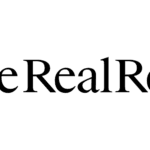The Coca-Cola Company (KO) Stock Analysis
![]()
The Coca‑Cola Company (KO) Stock Analysis
Market Capitalization: $291.21 Billion
Shares Outstanding: 4.31 Billion
Sector: Consumer Staples
Industry: Beverages
Analysis as of: February 11, 2025
1. Company Overview
The Coca‑Cola Company (NYSE: KO) is one of the world’s most recognizable beverage companies, with a history spanning over a century. Renowned for its flagship soft drink, Coca‑Cola, the company offers a broad portfolio of beverages that includes sparkling soft drinks, water, juices, teas, coffees, and sports drinks. Its global brand recognition, extensive distribution network, and diversified product offerings have solidified its leadership in the non‑alcoholic beverage industry.
Key Business Segments:
· Beverage Portfolio:
- Carbonated Soft Drinks: Iconic brands like Coca‑Cola, Diet Coke, and Coca‑Cola Zero.
- Non‑Carbonated Beverages: Waters, juices, teas, coffees, and sports drinks complement the core portfolio.
· Geographic Diversification:
- KO’s products are marketed in virtually every region of the world, with tailored strategies to meet local consumer preferences and regulatory requirements.
· Marketing & Innovation:
- The company continuously invests in product innovation, packaging design, and digital marketing initiatives to maintain consumer engagement and brand loyalty.
· Sustainability & Operational Initiatives:
- Emphasis on sustainable packaging, water stewardship, and reducing its environmental footprint.
- Strategic investments in digital transformation and supply‑chain efficiency to enhance overall operational performance.
2. Financial Performance
a. Revenue and Growth
- TTM Revenue: $47.06 Billion
- YoY Revenue Growth (TTM): Modest and steady, reflecting the company’s stable demand and pricing power.
Analysis:
- Stable Revenue Base: Coca‑Cola has maintained consistent revenue levels, supported by its diversified beverage portfolio and global market reach.
- Resilient Growth: Despite facing evolving consumer preferences and competitive pressures, KO’s strong brand equity allows it to post steady revenue growth in a mature industry.
b. Profitability
- Net Income (TTM): $10.63 Billion
- EPS (TTM): $2.46
- Profit Margin: 22.59%
- Return on Equity (ROE): Approximately 39.55%
- Return on Assets (ROA): ~6.30%
- Return on Invested Capital (ROIC): 8.74%
Analysis:
- Robust Earnings: Solid net income and EPS underscore KO’s ability to convert revenue into profit efficiently.
- High ROE: Reflects strong shareholder returns driven by effective cost control and brand strength.
- Moderate ROA/ROIC: While asset returns are modest due to significant investments in global distribution and marketing, overall profitability remains attractive.
c. Margins
- Gross Margin: ~61.06%
- Operating Margin: 21.23%
- EBITDA Margin: 23.52%
- FCF Margin: 10.07%
Analysis:
- Strong Gross Margin: Demonstrates the company’s pricing power and effective cost management in production and sourcing.
- Healthy Operating Margin: Reflects disciplined expense control and the benefit of high‑margin beverage products.
d. Cash Flow
- Operating Cash Flow (TTM): $6.81 Billion
- Capital Expenditures (TTM): –$2.06 Billion
- Free Cash Flow (TTM): $4.74 Billion
- FCF Per Share: Approximately $1.10
Analysis:
- Consistent Cash Generation: Robust operating cash flow supports both ongoing operations and strategic investments.
- Investment Flexibility: Strong free cash flow enables KO to fund dividends, share repurchases, and innovation initiatives.
3. Balance Sheet
- Cash & Cash Equivalents: $14.57 Billion
- Total Debt: $44.52 Billion
- Net Cash Position: –$29.95 Billion (i.e., debt exceeds cash by ~$29.95B)
- Shareholders’ Equity (Book Value): $26.37 Billion
- Book Value Per Share: $5.78
- Working Capital: $748.00 Million
- Debt-to-Equity Ratio: 1.69
- Debt-to-FCF Ratio: 9.39
- Current Ratio: 1.03
- Quick Ratio: 0.72
Analysis:
- Balanced Capital Structure: While KO’s total debt is substantial, the company’s stable cash flows and moderate debt-to-equity ratio suggest a manageable level of financial leverage.
- Sufficient Liquidity: Current and quick ratios indicate that KO can meet its short‑term liabilities, although it relies on operational cash flows to support its debt servicing.
4. Valuation
- Current Stock Price (Last Close): $64.55
- PE Ratio (TTM): 27.48
- Forward PE: 23.01
- Price-to-Sales (PS) Ratio: 5.91
- Price-to-Book (PB) Ratio: 11.17
- Price-to-Free Cash Flow (P/FCF) Ratio: 60.80
- PEG Ratio: 4.04
- EV/EBITDA: 28.75
- EV/EBIT: 31.84
- EV/FCF: 67.11
Analysis:
- Reasonable Earnings Multiples: A trailing PE of 27.48 and a forward PE of 23.01 reflect market confidence in KO’s earnings stability and dividend sustainability.
- Premium Valuation: Higher PB and PEG ratios are common for a premium brand with strong global presence, though they suggest that investors expect continued steady performance.
- Enterprise Value Multiples: Modest EV/sales and EV/EBITDA ratios indicate that KO is fairly valued relative to its revenue and operating performance.
5. Market Performance
- 52‑Week Range: $57.93 – $73.53
- 52‑Week Price Change: +13.52%
- Beta (5Y): 0.62
- 50‑Day Moving Average: $62.76
- 200‑Day Moving Average: $65.40
- Relative Strength Index (RSI): 72.22
Trading & Short Interest:
- Average Volume (20 Days): 16,058,951 shares
- Short Interest: 33.49 Million shares
- Short % of Shares Outstanding: 0.78%
- Short Ratio (Days to Cover): 2.03
Analysis:
- Steady Price Appreciation: A 52‑week price gain of +13.52% reflects solid investor sentiment and confidence in KO’s brand and financial performance.
- Low Volatility: A beta of 0.62 indicates that KO’s stock is less volatile than the broader market—a typical trait for a consumer staples giant.
- Technical Signals: An RSI near 72 suggests that the stock is approaching overbought territory, which may prompt cautious monitoring for potential short‑term corrections.
- Robust Liquidity: High average trading volume and modest short interest reflect a well‑traded, liquid stock with limited bearish sentiment.
6. Financial Health and Risks
a. Liquidity
- Current Ratio: 1.03
- Quick Ratio: 0.72
- Working Capital: $748.00 Million
Analysis:
- Sufficient Short‑Term Liquidity: While KO’s current and quick ratios are modest, they are typical for a global consumer staples company with significant inventories and receivables. The positive working capital supports ongoing operations.
b. Leverage
- Total Debt: $44.52 Billion
- Debt-to-Equity Ratio: 1.69
- Debt-to-FCF Ratio: 9.39
Analysis:
- Moderate Financial Leverage: Although KO’s debt level is substantial, the manageable debt-to-equity and debt-to-FCF ratios indicate that the company is capable of servicing its debt through steady cash flows.
c. Profitability & Cash Flow
Analysis:
- Strong Profitability: With a net income of $10.63 billion and healthy margins, KO efficiently converts revenue into profit.
- Robust Cash Flow Generation: Consistent operating and free cash flow reinforce the company’s ability to sustain dividends and reinvest in growth.
d. Operational & Market Risks
Analysis:
- Commodity & Currency Risks: Fluctuations in raw material costs (e.g., sugar, aluminum) and foreign exchange volatility can affect margins.
- Regulatory & Competitive Pressures: Changes in health regulations, labeling requirements, and stiff competition in the beverage industry pose ongoing challenges.
- Digital Transformation & Consumer Trends: KO must continue to invest in innovation and adapt to changing consumer preferences toward healthier and more sustainable products.
7. Conclusion
Pros:
- Iconic Brand & Global Reach: KO’s strong brand equity and extensive global distribution network provide a sustainable competitive advantage.
- Stable Revenue & Profitability: Consistent revenue performance and robust profit margins underpin steady earnings.
- Healthy Cash Flow: Strong operating and free cash flows support dividend payments and strategic reinvestment.
- Attractive Dividend History: With an annual dividend of $1.94 and a yield of 2.87%, KO offers reliable income and a long track record of dividend growth.
- Low Volatility: A beta of 0.62 makes KO a defensive, lower‑volatility investment option in turbulent markets.
Cons:
- Premium Valuation: Higher PE, PB, and PEG ratios reflect market expectations that may not be sustainable if growth slows.
- Substantial Leverage: A debt-to-equity ratio of 1.69 and a net cash position that is negative indicate reliance on debt, which could be a concern in a rising interest rate environment.
- Operational Risks: Exposure to commodity price fluctuations, regulatory changes, and evolving consumer trends poses ongoing challenges.
Final Note:
The Coca‑Cola Company remains a cornerstone in the consumer staples sector. With its enduring brand, diversified beverage portfolio, and consistent financial performance, KO offers stability and income potential amid economic cycles. Nonetheless, investors should remain vigilant about potential risks from high leverage, commodity price volatility, and evolving consumer preferences. Comprehensive due diligence and ongoing monitoring are essential for informed investment decisions.
Disclaimer: This analysis is for informational purposes only and does not constitute investment advice. Investing involves risks, including the potential loss of principal. Past performance is not indicative of future results. Please consult a qualified financial advisor before making any investment decisions.





